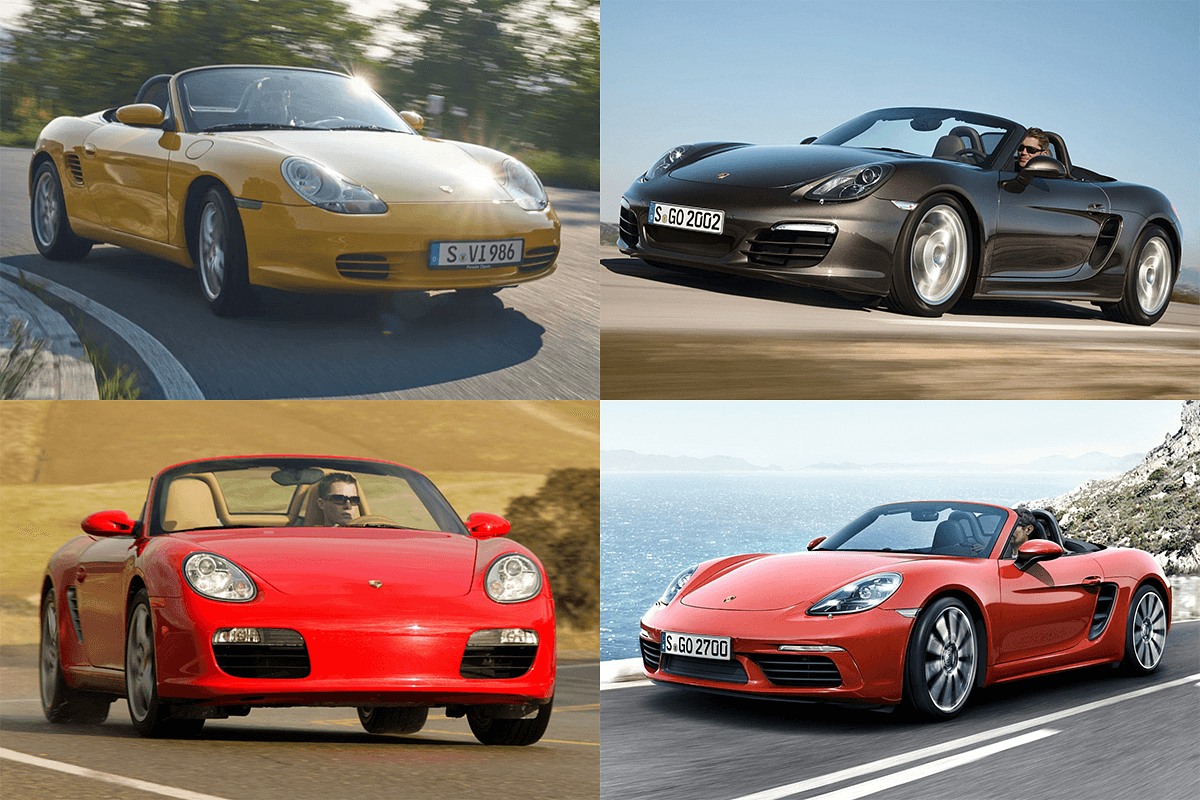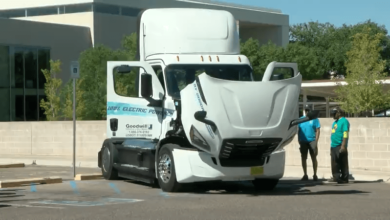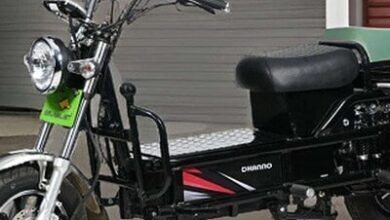6 Future Electric Supercars And Sports Cars That Will Shake Up The EV Market

The Hyundai Ioniq 5 N is arguably another Tesla Model S moment in the greater EV landscape. That’s quite a controversial statement, but allow me to explain. While the Tesla Roadster was the first model produced by the famous American automaker, the Tesla Model S was the first electric vehicle to provide proof of concept. The Model S was the first EV to show beyond doubt that electric vehicles could play an important role in the future of the automotive industry. It was a revelation and forced legacy automakers to sit up and take notice.
But since the Model S introduction in 2012, most electric vehicles have been one-trick ponies. Their fun factor relies mostly on bonkers acceleration, though there are some exceptions, like the Rimac Nevera, Automobili Pininfarina Battista, and the Porsche Taycan GT, the latter of which beat several high-profile gas-powered track stars around the Nürburgring. Unfortunately, you need to be either a millionaire or a billionaire to afford one of these machines.
The Ioniq 5 N is also stupidly fast in a straight line, but you get the idea that the main brief was to be fun. If you look at all the technology Hyundai developed for the car, it’s clear that its 0 to 60 mph time is one of the least interesting things about it. Automakers have now realized that if all cars can get to 60 mph in three seconds, they need to find something else to make their vehicles stand out. And that’s exactly what the Ioniq 5 N does. It’s the start of a new era where the onus is less on speed and more on fun, which is something gas-powered cars are also guilty of, by the way.
Thankfully, Hyundai is not the only EV maker moving away from outright speed. Here’s a list of seven upcoming cars that will undoubtedly stir the pot in the EV segment.
Related
2025 Hyundai Ioniq 5 N First Drive Review: Setting The Bar For Electric Performance
Taking on Laguna Seca Raceway in an electric crossover? Hell yeah.
1
Porsche 718 EV: Keeping That Mid-Engine Feeling Alive
The Porsche Boxster and Cayman have been class-leading sports cars since their respective introductions, and this is mostly due to their mid-engine layout. Having the engine (the heaviest part of the car) near the middle, whether from the front or the rear, distributes the weight more evenly, resulting in neutral handling and maximum grip. The Boxster and Cayman have always been rear mid-engine cars, putting a little more weight toward the rear to aid traction, too.
Most electric vehicles ride on a skateboard design, with the batteries mounted low down between the front and rear tires. This keeps the center of gravity low, which also happens to be good for handling, but if Porsche opted to go this route, the Boxster and Cayman would have lost their famous handling characteristics, and you’d be perched too high up. And a 718 without that mid-engine feel is like a 911 GT3 equipped with a 2.0-liter turbocharged four-cylinder diesel.
Luckily, Porsche has found a way to put the weight of the batteries to good use. With today’s battery cell technology, the batteries are the biggest and heaviest part of the car – and this could be true for the next decade or so – so we developed what we call the e-core battery design. Packaging-wise and center of gravity-wise, it’s more or less a copy of a mid-engine design,” said Porsche’s technical chief, Michael Steiner. Instead of going with the traditional EV skateboard, Porsche will seemingly mount batteries behind the rear seats to retain that mid-engine feeling.
And if you don’t want an EV Boxster or Cayman, don’t worry. The current model will continue to live alongside its EV brother, though we don’t know for how much longer.
2
Porsche Mission X: Building The Car With The Fastest Road-Legal Nürburgring Lap Time
Porsche has already confirmed that the Mission X will enter production, but before it does, the German automaker has to hit a few targets. The most important target is to be the fastest road-legal car around the Nürburgring, which is going to be a difficult task. The top 10 spots are all occupied by (partly) gas-powered vehicles, with the Mercedes-AMG One sitting right at the top. The Mercedes set a time of 6:35.183 minutes, which means nothing without context. The fastest EV to ever lap the Green Hell is the Rimac Nevera, which set a 7:05.298 on the full-length circuit, with alleged time to spare.
Porsche knows there’s work to be done, and part of that will be giving the Mission X the same mid-engine layout using the same tactics we mentioned earlier. But before that can happen, battery technology needs to advance. Porsche wants a perfect 1:1 metric power-to-weight ratio, which translates to 1 horsepower per 2.2 pounds in America. That’s simply not possible yet, even though the car will mostly be made of carbon fiber. But if anyone can do it, it’s Porsche. We’re talking about a company that invested in synthetic fuel just so it can keep its most legendary combustion model alive.
3
Caterham Project V: Proving BEVs Can Be Lightweight
Out of all the automakers that could have proved that it’s possible to build a lightweight sports car powered by electricity, we never expected it to be Caterham. We thought it would be Alpine, as its A110 E-ternite concept weighed less than a Porsche 718 Cayman. Also, Caterham hasn’t really done anything but build a series of crazy, lightweight, and barely road-legal cars based on the Lotus 7. In terms of an automaker making giant leaps forward, this was like Ford going from the Model T directly to the first-generation Mustang.
Project V hits all the right sports car targets, except for having an engine. The single rear-axle motor produces 268 horsepower, and it has a 55-kWh USOC lithium-ion battery that’s estimated to be good for 250 miles of driving range. That’s perfect for a day-long journey with no specific destination in mind. Best of all, it only weighs 2,624 pounds, which is only 300 lbs more than a Mazda Miata but 200 lbs less than a Toyota GR86.
4
Lotus Evija: Proving EV Hypercars Can Also Be Lightweight
The Evija is a competitor to the mad Rimac Nevera. The latter has four electric motors producing a combined output of 1,877 hp and 1,740 lb-ft of torque. Thanks to those four motors, the Nevera was able to set multiple acceleration and speed records.
Like Caterham, Lotus is famous for building lightweight cars, but that has now changed with its new electrification strategy. Once the Emira drops away, the range will be fully electric, and the Evija is the halo car that will usher in Lotus’ new era. Despite being a BEV, Lotus has stuck to its lightweight philosophy somewhat. The Evija also has a quad motor setup, and it produces 1,972 hp. Still, Lotus is aiming for a curb weight of 4,160 lbs, which is 600 lbs less than the Nevera. Rimac had better enjoy those records because Lotus is coming for them.
The Lotus has also adopted a similar philosophy to the electric Porsche’s above, in that its batteries are housed in a ‘chest’ that sits in the same position a mid-mounted engine would. It may have been several years since the Evija was revealed, but the first cars are yet to reach customers, hence its inclusion on this list.
5
Hennessey Project Deep Space: Dragging Motoring Into The Space Age
In November 2021, Hennessey announced that it would build a 6×6 electric hyper-GT. It has since missed the deadlines set, but Hennessey’s Director of Design, Nathan Malinick, confirmed to CarBuzz that the project is ongoing. “We were quite far along into Deep Space, but we listen to our customers, and they wanted something manual, high-revving, naturally aspirated, and super engaging,” said Malinick. In short, Hennessey is a small automaker, and it can pivot quickly depending on what its customers want. And what its customers want right now is an American Porsche Carrera GT.

Related
Hennessey’s ‘American Carrera GT’ Will Be The Antidote To Soulless EVs
Hennessey’s next supercar was going to be electric, but instead, it’ll be a naturally aspirated, manual supercar that revs to the moon.
Hennessey isn’t a brand associated with EVs, which is why it needs to go so radical with the first model. According to the American automaker, Deep Space will have more than 1,000 hp, four seats arranged in a diamond pattern, and a central driver’s seat. Just in case that’s not showy enough for you, it also has gullwing doors, and six-wheel drive. Yup, the other automakers here are still busy with a quad-motor setup, while Hennessey is already one step ahead with six individually powered wheels. We can only imagine how much power it will have, considering a quad-motor setup already produces roughly 2,000 hp. However much it will be, it needs to be sufficient to get this exuberant family car from zero to 200 mph faster than any car before while carrying golf clubs.
6
Ferrari’s First EV: An Electric Hypercar Made The Maranello Way
Proof that Ferrari is working on an electric supercar dates back all the way to 2020 when the first patent applications for a BEV were filed. Why haven’t we seen a concept car or a prototype yet? Well, Ferrari is taking its time with its first-ever EV, just as it did with its first-ever SUV, the Purosangue. And waiting and building something completely different seems to pay off, as people can’t get enough of the V12-powered SUV, which Ferrari insists is not an SUV.

Related
The Only V12 Powered SUVs Ever Made
SUVs powered by a V12 engine are in short supply and only two are currently offered for sale: the Ferrari Purosangue and the Rolls-Royce Cullinan.
In recent months, we’ve seen a drastic increase in EV-related Ferrari patent filings. Some of the patents are quite simple, such as a climate control system that uses minimal energy and will, therefore, have an insignificant impact on range. Other patents are more revealing, suggesting the electric Ferrari will use the same quad-motor setup as the Nevera and Battista. But unlike these cars, the Ferrari’s wheels will have electric motors mounted within the wheel hub.
The most recent patents are for making electric supercars sound good without having to resort to speakers. Ferrari is investigating a noise system similar to Dodge’s Frazonic Exhaust. Ferrari patented two systems. One uses the sounds of the EV motors, fed through resonance tubes; the other uses aerophone instruments that channel air into noise. One thing is obvious, however. Ferrari won’t introduce an EV until it can do it the Ferrari way.




